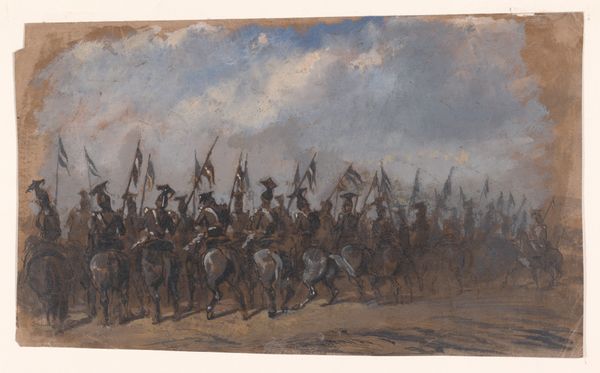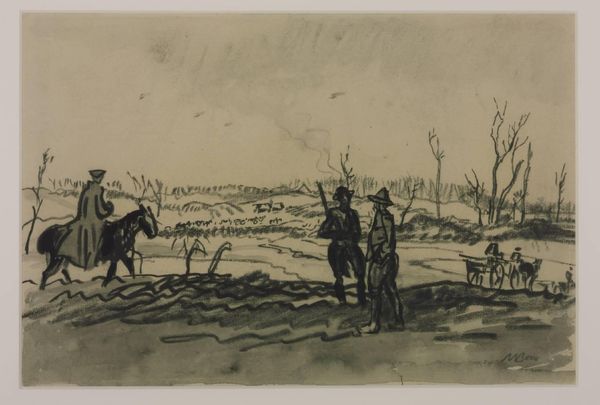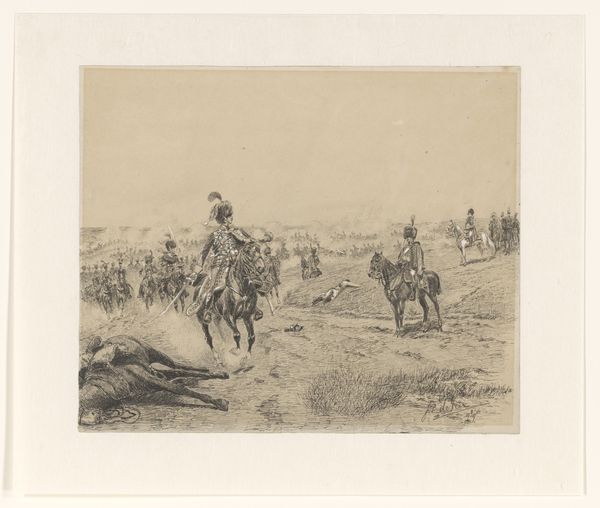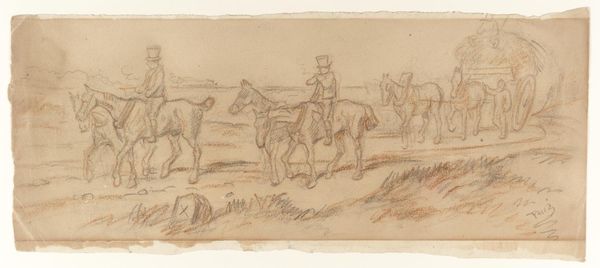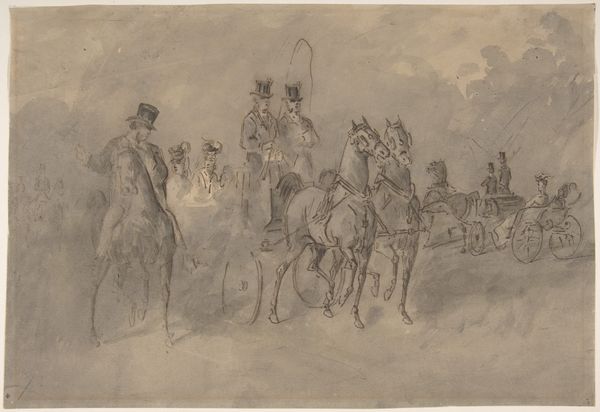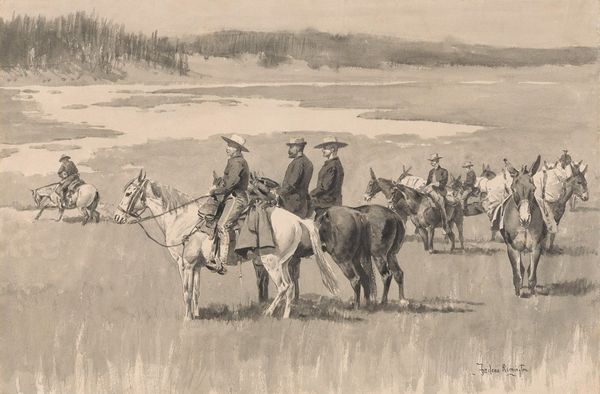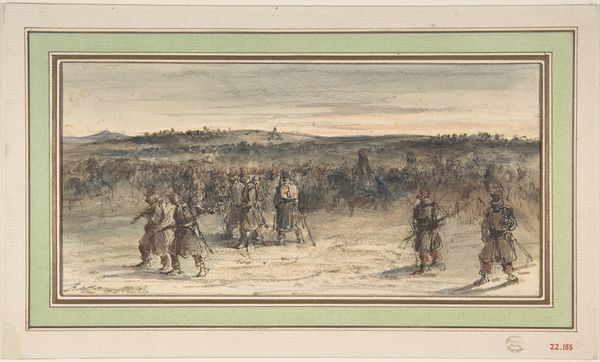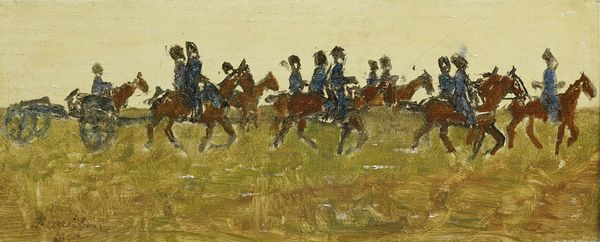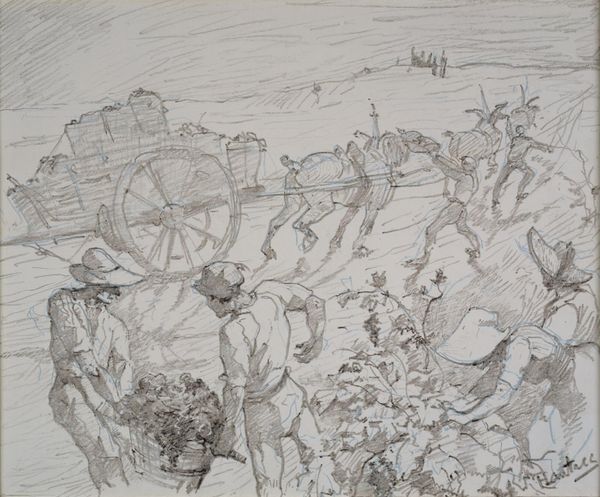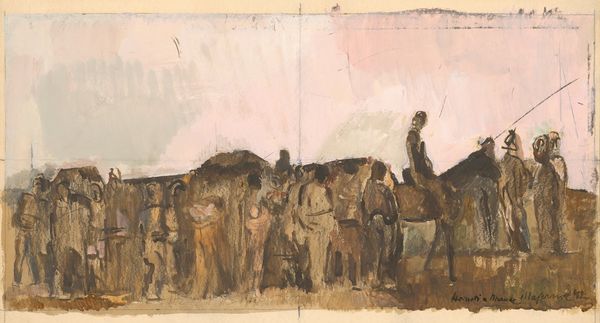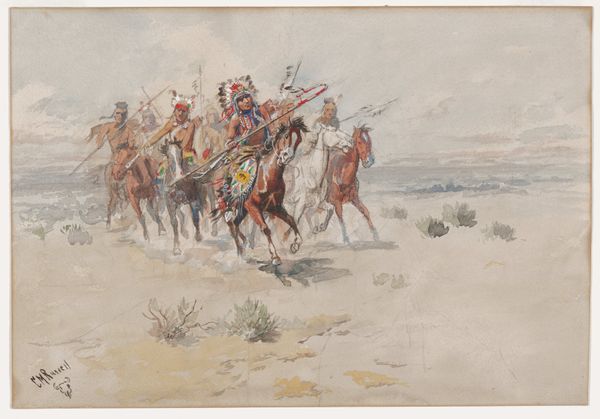
watercolor
#
landscape
#
charcoal drawing
#
oil painting
#
watercolor
#
watercolour illustration
#
genre-painting
#
watercolor
#
realism
Dimensions: height 303 mm, width 515 mm
Copyright: Rijks Museum: Open Domain
Curator: Looking at this somber landscape, one gets a sense of stillness and muted tension, right? Editor: It does feel heavy. All that smoke clinging to the ground makes the soldiers look spectral, like they’re almost fading into the earth. A premonition of some kind? Curator: Perhaps. This is Jan Hoynck van Papendrecht’s “Infantry Shooting Exercises on the Heath," probably made between 1868 and 1898. Van Papendrecht specialized in military subjects. The artwork's watercolor gives a somewhat picturesque depiction of military exercises but seen through a realistic lens. Editor: There’s something incredibly poignant about this mundane scene. It's so matter-of-fact in its portrayal, but seeing all those kneeling figures lined up, dwarfed by the landscape. It feels almost existential, a meditation on mortality disguised as a military exercise. I wonder if they’re really that good, that they practice down on one knee! Curator: The watercolor does mute the spectacle of war into something more commonplace, part of the everyday fabric. In this case, that might mean that its inclusion in a museum setting today encourages us to examine the military apparatus from within a frame that attempts to soften the often violent history. Editor: Right. I am thinking the haze lends itself well to watercolor. Is it the artist’s attempt to soften war a little? Because there's nothing romanticized here. It's work. Dirty, thankless, probably exhausting work, set against a really unforgiving backdrop. Even the guy on the horse looks bored. It's beautifully bleak! Curator: Bleakness certainly informs the historical reading here. These are genre paintings reflecting the Dutch realist traditions of that time and fitting well in many private collection that later on contributed to a much broader public understanding of war as a recurring political theme. Editor: It makes you think about the stories each of those soldiers carries, don't you think? It transcends just soldiers marching on heath in some nondescript place. It humanizes the individuals just by not idealizing them. Curator: Yes, it gives them a stage. Perhaps then art institutions are also such platforms in different ways. Editor: True. Thinking about the banality of this practice, compared to the dramatic history of wars makes one pause... Curator: Definitely. Thank you for pointing this out.
Comments
No comments
Be the first to comment and join the conversation on the ultimate creative platform.

